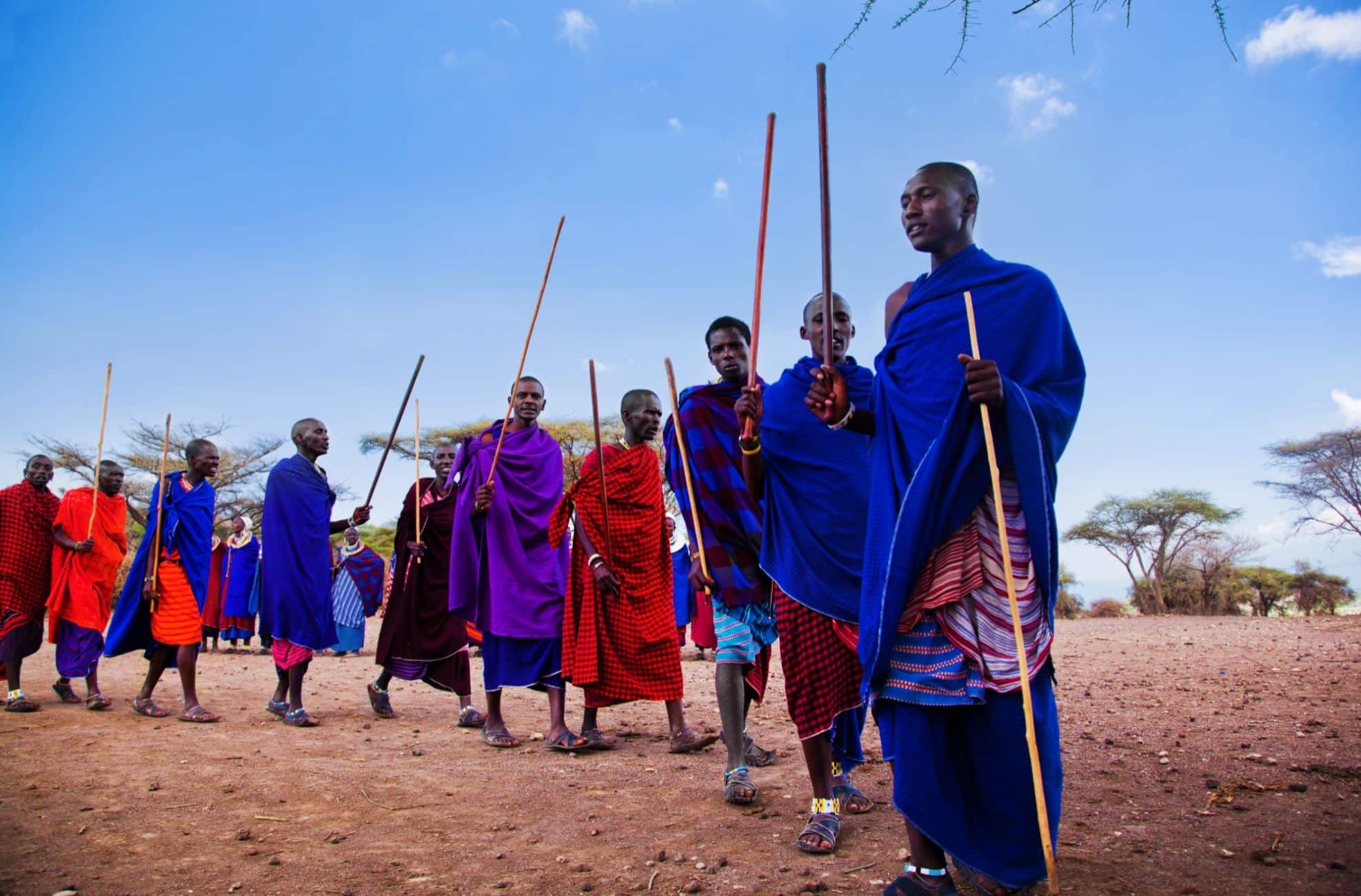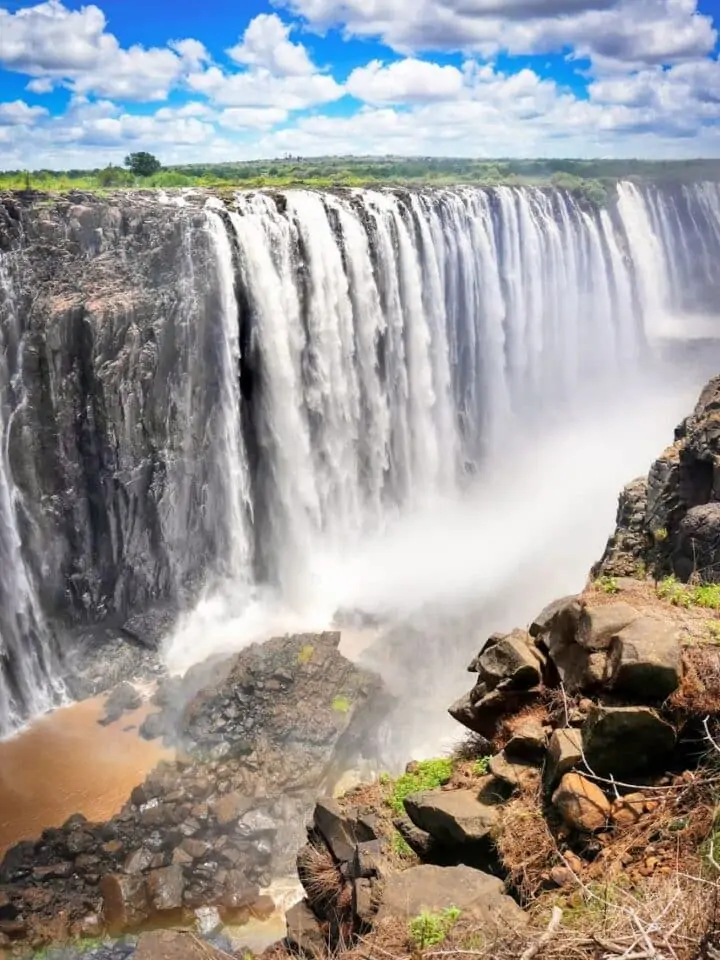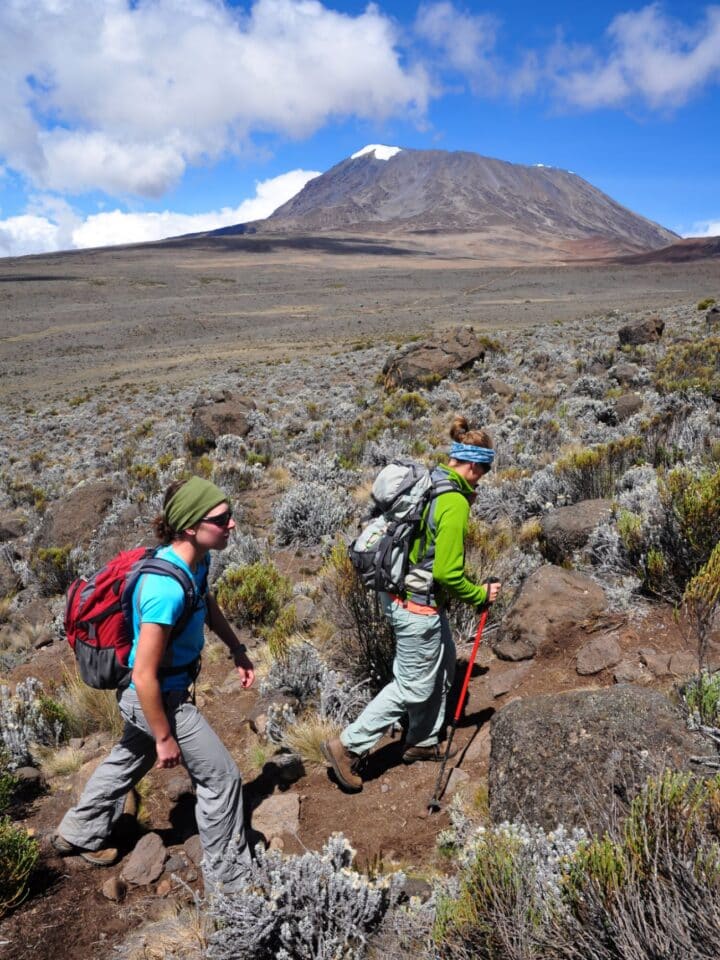When we first whispered the words “family safari in Kenya” over breakfast, the kids stopped mid-spoonful. Our daughter asked if lions really roar at night; our son wanted to know whether zebras are more like horses or donkeys. I pictured those sweeping Maasai Mara plains I’d only ever seen in documentaries—their tawny grass bending in the wind, dotted with acacia trees and moving like a living tide with wildebeest during the Great Migration. What followed was a journey that braided together wild beauty and cozy family moments: binoculars fogged by excited breath, whispered giggles under mosquito nets, the hush of dawn drives, and the joyous chaos of picnic lunches while elephants grazed nearby. This is our story—told step by step—plus everything we learned so you can plan your own Maasai Mara with kids adventure.
How We Planned Our Family Safari in Kenya
Timing the Great Migration (July–October)
We centered our dates around the Great Migration window, when millions of wildebeest and zebras flood into the Maasai Mara from Tanzania’s Serengeti (typically July to October). This maximizes chances to witness river crossings, big-cat action, and dense wildlife concentrations—epic for adults and utterly mesmerizing for kids.
Choosing Family-Friendly Camps and Guides
We prioritized lodges advertising family tents or interconnecting rooms, kid-friendly meal times, and guides experienced with young travelers. We also looked for:
- A pool for mid-day breaks
- Shorter or flexible game drives (2–3 hours)
- Optional child-focused activities (e.g., junior ranger programs, casting animal tracks in plaster)
- Reliable Wi-Fi (useful for quick calls home and school check-ins)
Health, Safety, and Comfort
We consulted our pediatrician for vaccinations and malaria prophylaxis recommendations, packed child-safe insect repellent, and practiced “safari etiquette” at home: inside voices on drives, no sudden standing in the vehicle, and patient listening to the guide. We also double-checked dietary options ahead of time; lodges happily accommodated our preferences with clear labeling and custom meals upon request.
Budget and Booking Strategy
Peak migration season means higher prices and limited availability. We booked six months ahead and chose a “fly-in” safari (Nairobi to Mara by small plane) to save time and avoid long road transfers. For value, we opted for a mid-range tented camp with an all-inclusive plan (meals, most drinks, and game drives), then added a splurge: a sunrise balloon safari for our anniversary.
Getting There: Nairobi to the Maasai Mara
We landed in Nairobi in the late evening and stayed overnight at a quiet hotel near Wilson Airport. The next morning, we boarded a small bush plane—just a dozen seats—and within 45 minutes the landscape transformed from city to patchwork farms to a golden ocean of grass. The kids pressed their faces to the windows, counting giraffes from the sky. We touched down on a dirt airstrip where our guide, Daniel, greeted us with warm smiles and reusable water bottles (another family-friendly plus).
Where We Stayed: Cozy Tents, Big Skies
Our tented camp balanced comfort with authenticity. Think: spacious family tent with wood floors, en-suite bathroom, a private verandah overlooking a river bend, and beds draped with mosquito nets like gauzy castles. At night, lanterns glowed along the sandy paths. The camp’s main area had an open deck for sundowners and a small library with field guides. Staff quickly learned our kids’ names and kept a stash of hot chocolate ready after evening drives.
Meals: Breakfasts were hearty (fresh fruit, eggs to order, pancakes), lunches often picnic-style on drives, and dinners shared around a long table. The camp happily adjusted spice levels and portions for the kids and offered plenty of familiar options: grilled chicken, pasta with tomato sauce, and fruit platters. When we mentioned our dietary preferences, the chef nodded like it was the most natural thing in the world and made thoughtful swaps.
Day-by-Day Highlights in the Maasai Mara
Day 1: First Game Drive—Learning to See
Our inaugural drive began before sunrise. The air was crisp, the sky painted lavender. The kids were quiet, clutching their binoculars like treasures. Within minutes, we saw a dazzle of zebras (our son announced they were definitely more “horse-ish”), impalas stepping like dancers, and a lone giraffe nibbling at an acacia. Daniel paused frequently, teaching us how to scan the horizon, read tracks, and recognize bird calls. We ended the morning with a picnic breakfast—still warm muffins, yogurt, and strong Kenyan coffee for the grown-ups—in a spot where hippos snorted below.

Family tip: Ask your guide to share tracking basics and give each child a “spotter role” (e.g., birds, big cats, or “anything with stripes”). It keeps them engaged and builds confidence.
Day 2: The Great Migration—A Breath-Held River Crossing
Nothing prepared us for the tension at the river. Wildebeest bunched at the bank, eyes wide, dust hanging in the air. Crocodiles floated near the surface like carved logs. For a long time, nothing happened—just the murmuring of the herd and the distant grunt of hippos. Then, a single wildebeest jumped. The herd followed, dark bodies surging, hooves clattering, the river churning. The kids went silent. It was raw, unscripted nature, and we felt both humbled and alive.
We kept a respectful distance and stayed as long as the animals did—then drove to higher ground for lunch. That afternoon, we watched a coalition of male lions napping under thorn bushes. Our daughter asked if they ever get bored. Daniel smiled: “They conserve energy. You never know what the evening will bring.” We learned to appreciate stillness as much as action.
Family tip: Bring patience and snacks. Not every moment is dramatic, and that’s okay. The suspense, the waiting—that’s part of the magic of a family safari in Kenya.
Day 3: Balloon Safari and Bush Breakfast
A predawn wake-up led to a fire-lit balloon launch site. The kids were initially nervous, but the pilot’s calm explanations made it an adventure. We rose with the sun, floating above herds moving like ink blots across the plains. From the balloon basket, the horizon felt endless. After landing, we celebrated with a bush breakfast: omelets sizzling on portable stoves, fresh bread, and fruit laid out under a lone umbrella thorn tree. It was our trip’s “pinch-me” moment.
Family tip: Minimum ages and heights apply for balloon rides. If your little one is too young, consider a split activity—one parent flies while the other enjoys a special camp activity with the kids, then swap another day.
Day 4: Maasai Village Visit and Nature Walk
We visited a nearby Maasai manyatta (village) with our guide and a local liaison. The welcome dance had the kids clapping along, and we learned about beadwork, cattle culture, and how homes are built from earth and cow dung. The elders answered our children’s questions with patience, and we bought a handmade bracelet our daughter hasn’t taken off since. Later, at the camp’s buffer zone, a guided nature walk introduced us to the small wonders: dung beetles, medicinal plants, and the stories footprints tell.

Family tip: Prepare your kids in advance about cultural etiquette—ask before taking photos, listen with respect, and consider a small donation or fair trade purchase to support the community.
Day 5: Cheetahs at Dawn, Pool by Noon
At sunrise we tracked a mother cheetah with two sub-adults. We watched them scan termite mounds like sentinels. That electric, coiled stillness cut the air—and then they disappeared into grass, reappearing moments later fifty meters away. After the drive, we declared a “pool-and-puzzles” afternoon. Wildlife can be intense; kids need decompression. We spent two lazy hours swimming, reading, and letting the kids draw “field notes” in their journals (stick-lion masterpieces included).
Family tip: Build downtime into your itinerary. The best Maasai Mara with kids plan balances thrilling drives with flexible afternoons.
Meals and Family-Friendly Food Wins
- Packed breakfast on the move: When the animals are active early, this helps you stay out longer without meltdowns.
- Simple, kid-approved dinners: Most lodges are pros at grilled meats, rice, potatoes, and fresh fruit.
- Hydration: We kept reusable bottles in the vehicle; guides routinely carry coolers for refills.
- Special treats: We tucked a few granola bars and gummy bears in our daypack. They saved the day more than once.
Practical Tips for a Great Migration Family Travel
Choosing the Right Camp or Lodge
- Family tents or interconnecting rooms
- Pool and shaded lounges
- Shorter, flexible game drives
- Kid-friendly activities (scavenger hunts, junior ranger certificates)
- Guides experienced with children
Packing List (What Actually Helped)
- Soft-sided duffel (small planes have weight limits)
- Layering basics: light fleece, breathable shirts, convertible pants
- Neutral colors: avoid bright whites and blues (tsetse flies love blue/black)
- Sun armor: wide-brim hats, sunglasses, high-SPF sunscreen
- Binoculars for kids: lightweight and shock-resistant
- Headlamps & a tiny stargazing app: camp paths and night-sky fun
- Notebook and colored pencils: for field journals
- Small first-aid kit: bandages, kids’ pain reliever, rehydration salts
- Wet wipes and hand sanitizer
- Camera with extra batteries (charging stations are available but plan ahead)
Health & Safety with Kids
- Follow your doctor’s advice on vaccines and malaria prophylaxis.
- Use child-safe repellents and long sleeves at dawn/dusk.
- Always listen to your guide; never step out of the vehicle without permission.
- Keep a calm, consistent routine: early nights, predictable mealtimes, and quiet time between drives.
Budgeting and Booking Advice for Families
- Travel window: For the Great Migration family travel experience, July–October is peak—book early.
- Fly vs. drive: Flying from Nairobi to the Mara costs more but saves hours on rough roads.
- All-inclusive plans: Often better for families—no surprises on meals and most activities.
- Private vehicle option: Pricier, but it lets you tailor drive length and focus to your kids’ energy.
- Multi-night stay: We found four nights ideal—enough time to settle, explore, and rest without rushing.
Frequently Asked (Kid) Questions We Got—and How We Answered
- “Will we see a lion every day?” Maybe, maybe not. That uncertainty is part of the thrill. Guides track patterns, but nature has no script.
- “Can animals come into our camp?” Camps are unfenced; wildlife sometimes wanders near, especially at night. That’s why we’re escorted to our tent after dark.
- “Why can’t we run to see the cheetah?” Predators may see sudden movement as threatening. Sitting quietly helps wildlife feel safe—and lets us observe longer.
Balancing Education and Wonder
We brought along a child-friendly field guide and made a game out of identifying species. Each evening, the kids picked a “creature of the day,” then we spent ten minutes reading about it. Our daughter chose the lilac-breasted roller for its rainbow plumage; our son picked the oddly endearing warthog. These micro-lessons anchored the day’s excitement and made the trip feel like a living classroom.
Extending the Trip: Nairobi with Kids (Optional)
If you have an extra night or two in Nairobi:
- Giraffe Centre: Up-close (and height-equalizing!) encounters with endangered Rothschild’s giraffes.
- David Sheldrick Wildlife Trust: Orphaned elephant calves at feeding time—a tender, teachable moment about conservation.
- Karen Blixen Museum: A glimpse into colonial-era history; older kids may appreciate it more.
- Family dining: Many restaurants in Karen and Westlands are family-friendly and can accommodate dietary requests with advance notice.
What Stood Out Most to Our Family
- The stillness between the moments: Waiting at the river, listening to the grass breathe, taught our kids patience and respect.
- The warmth of our guides and camp staff: They treated our children like budding naturalists.
- The scale of the migration: It’s overwhelming in the best way—an ecological heartbeat you can see and hear.
- Shared awe: On the last night, we lay on the deck counting constellations. The kids whispered that the Milky Way looks like a salt trail for giraffes. I’ll carry that image forever.
Final Reflections and Takeaways
Planning a family safari in Kenya during the Great Migration is equal parts logistics and leap of faith. You plan what you can—dates, health precautions, kid-friendly camps—and then you surrender to the unpredictability of the Maasai Mara. That surrender became our greatest gift. We learned to wake early, to wait graciously, to watch carefully, and to celebrate small wonders: a dung beetle’s determined roll, the lacework of a weaverbird nest, the echo of a lion’s low call drifting through canvas walls at midnight.
For families, a safari is not just about ticking off the Big Five. It’s about shaping patience into curiosity and curiosity into care. It’s about the gleam in a child’s eyes when they whisper, “I spotted it first.” It’s about conversations that begin with, “Why do wildebeest risk the river?” and end with a deeper understanding of how wild systems hold the world together.
If you’re considering Maasai Mara with kids, here’s our distilled advice:
- Choose a child-savvy camp and a guide who loves teaching.
- Keep drives flexible and protect downtime like treasure.
- Pack smart, especially for sun, dust, and sudden chills.
- Prepare for quiet spells and embrace them; drama erupts without warning.
- Approach wildlife and local culture with humility and gratitude.
We left the Mara with dusty boots, a stack of lion drawings, and a family vocabulary newly crowded with words like “pride,” “crossing,” and “kopje.” Back home, when city sounds replace hyena whoops, we still carry that fierce, golden light inside us—the reminder that the world is wild and wondrous and that, for a handful of days, we got to wander in it together.
Quick Planner (For Your Own Great Migration Family Travel)
- Best time: July–October for the Great Migration; shoulder months can be quieter and slightly less expensive.
- How long: 4–5 nights in the Mara (plus 1–2 in Nairobi).
- Getting there: Fly Nairobi (Wilson) to the Mara’s nearest airstrip (45–60 minutes).
- Where to stay: Family-friendly tented camp or lodge with a pool and flexible drives.
- Must-do: Dawn game drives, one long mid-morning drive with picnic, optional balloon safari, village visit, and a lazy pool afternoon.
- Essentials: Child-size binoculars, hats, SPF, layers, neutral clothing, notebooks, light medical kit.
- Mindset: Be patient, be flexible, and let your guide set the rhythm.
If your kids love animals and you’re looking for a trip that blends wonder with wisdom, the Maasai Mara delivers—tenfold. And when you hear that first lion’s roar float across the plains and into your tent at night, you’ll understand why families return to Kenya again and again: the wild has a way of calling you back.






Leave a Reply